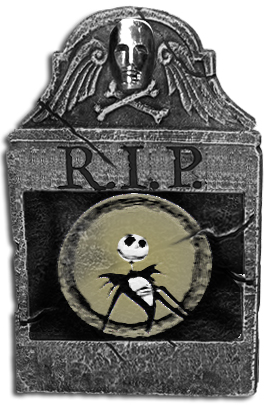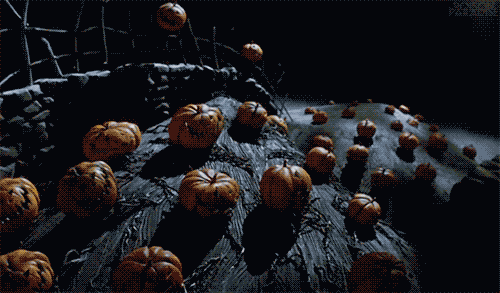 Here lies… The Pumpkin King of The Nightmare Before Christmas, and the visual effects that made him dance.
Here lies… The Pumpkin King of The Nightmare Before Christmas, and the visual effects that made him dance.
The work of Pete Kozachik, Eric Leighton, Ariel Valesco-Shaw and Gordon Baker holds a unique place in the history of the Academy’s visual effects category. As the first – and as of 2012, the last – soley animated film to receive a nomination in this category, it earned the visual effects branch’s respect like none before or since. Oh sure, Mary Poppins and Who Framed Roger Rabbit? won the category in their respective years, but those trophies came predominantly for the way they integrated animation with live action. The Nightmare Before Christmas, however, earned its nomination for the way Henry Selick’s stop-motion universe came to life thanks to innovative camera techniques.
While many may think this film’s idea of “visual effects” lays exclusively at the floating ghosts and shape-shifting shadows that pepper Henry Selick’s visual palate, the Oscar nomination was more a reward for the way the cameras were developed with computer technology to help navigate the heavily-designed “claymation” world.

More on this 1993 Oscar Race after the jump...
Nominated against Steven Spielberg’s Jurassic Park and the Sly Stallone-starring Cliffhanger, the Tim Burton production never stood a chance for the win, but that the Academy saw fit to nominate the technical advances of The Nightmare Before Christmas over the explosions of The Last Action Hero, the mechanical whales of Free Willy, and various assorted stunt-heavy movies is a testament.
The blockbuster landscape of 1993 was far different that it is nearly 20 years later. Of the year’s 20 highest grossing titles (of which Christmas is not a member) there aren’t too many that leap out as visual effects extravaganzas. Gosh, two years later in 1995 they could find only TWO nominees (Babe and Apollo 13). Now as the category has been permenantly expanded to five nominees, that not-to-distant statistic sounds rather lovely.
Visual effects nominations for an animated film will probably never happened again. Stop-motion animated titles like ParaNorman or Frankenweenie (another Tim Burton work) will find it nigh on impossible to do battle with the likes of The Avengers, The Dark Knight Rises, Life of Pi and so on in this or any other year from now on. We joke about “here lies…” at the start of each of these Oscar Horror pieces, and yet one could very truthfully write a eulogy for the possibility of animated films ever reaching the visual effects race ever again. Even when a WALL•E makes the nomination longlist, that final hurdle of far more obvious, in your face effects proves too high to overcome.

It makes me wonder though why developing technology to create the 3D environments of the (arguably “animated”) world of Avatar and its ilk is considered a “visual effect”, but Pixar’s ability to build software create finite creature details down to the most complicated pixel are merely considered “animation”. These “living animations” (as Burton calls them in the Nightmare DVD extras) are some of the greatest and most rewarding special effects of the ‘90s.